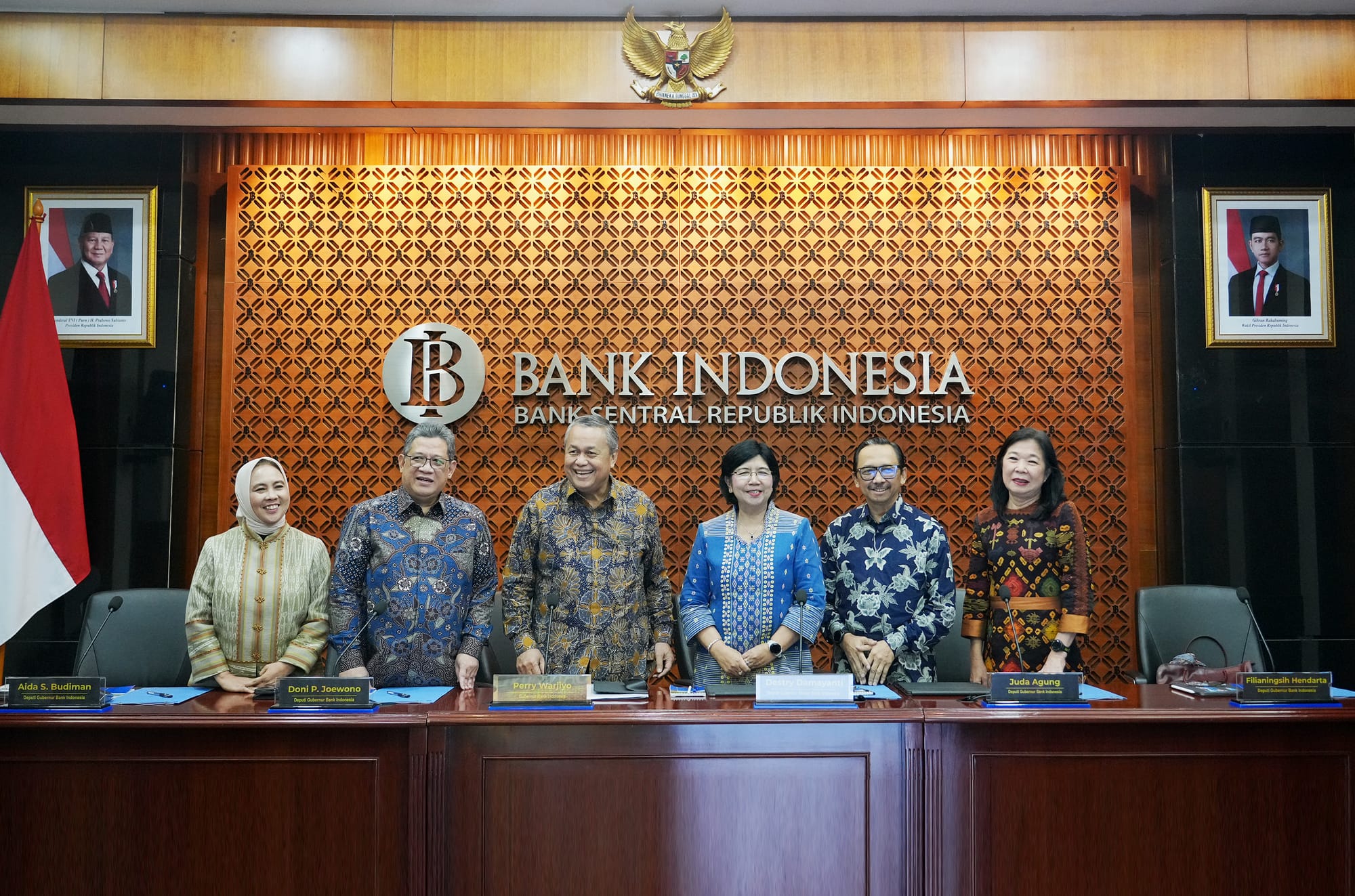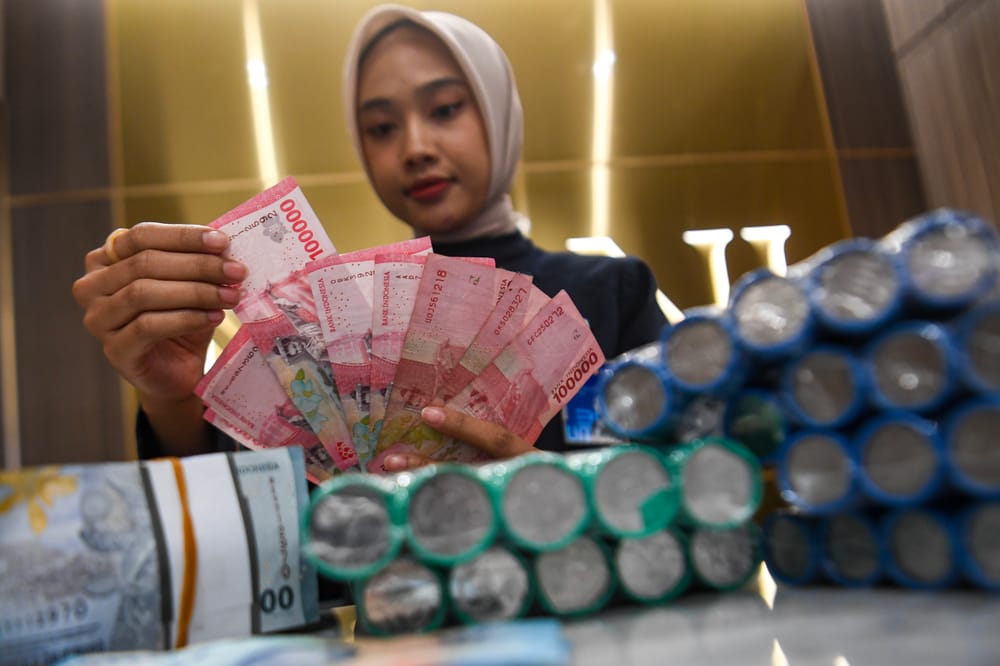A breath of fresh air blows from the Thamrin area, Jakarta. The Bank Indonesia (BI) Board of Governors Meeting (RDG) August 2025, on Wednesday (20/8/2025), decided to lower the benchmark interest rate (BI Rate) by 25 basis points to 5.00%, the Deposit Facility interest rate to 4.25%, and the Lending Facility interest rate to 5.75%.
This decision is a stimulus to encourage faster economic growth, considering the tendency of the United States central bank, The Federal Reserve (The Fed), to also lower its benchmark interest rate, the Fed Fund Rate (FFR).
"This decision considers the need to encourage economic growth in accordance with economic capacity," said BI Governor Perry Warjiyo in a press conference.
This is the second consecutive time that BI has lowered the BI Rate. Previously, at the July RDG, BI also lowered the BI Rate by 25 bps. Throughout this year, BI has lowered interest rates four times with a total of 100 bps.
As usual, the Board of Governors made this decision for the needs of the domestic economy while considering global conditions.
By lowering the benchmark interest rate, the hope is to spur the rate of economic growth through cheaper credit interest rates. Citing data from the Central Statistics Agency (BPS), economic growth in the second quarter of 2025 reached 5.12%.
“This decision considers the need to encourage economic growth in accordance with economic capacity,” said Perry Warjiyo.
Perry continued that the current inflation is still within this year's target range of 1.5%–3.5%. In July 2025, inflation was at 2.37%. Next year, inflation is also targeted to remain in the range of 1.5%–3.5%.
Perry explained that the decision to lower the benchmark interest rate also took into account the downward trend of the FFR.
“In the US, the tendency of declining inflationary pressures is driving stronger expectations of a future FFR decrease. Nevertheless, in the short term, global financial market uncertainty continues and needs to be watched to maintain domestic economic resilience from global spillover effects,” said Perry.
Meanwhile, the Jakarta Interbank Spot Dollar Rate (JISDOR) for the rupiah exchange rate, on Wednesday's (20/8/2025) trading, closed at Rp 16,291 per US dollar. Since the beginning of August, the rupiah exchange rate has strengthened by 1.29%.
This exchange rate development is supported by the consistency of BI's stabilization policies and the continued inflow of foreign capital, especially into government bonds (SBN) instruments, as well as the increased conversion of foreign currency into rupiah by exporters – in line with the strengthening implementation of government policies related to Natural Resources Export Proceeds (DHE SDA).
Going forward, the rupiah exchange rate is predicted to be stable with a tendency to strengthen, supported by Bank Indonesia's commitment to maintaining the stability of the rupiah exchange rate, attractive yields, low inflation, and improved prospects for Indonesia's economic growth.
Policy pro growth
Senior Economist and Associate Faculty of the Indonesian Banking Development Institute (LPPI), Ryan Kiryanto, said that this decision clearly demonstrates BI's firm stance in supporting economic growth.
“A pro growth stance with the rational consideration that both the realization and expectation of inflation are still within BI's target of 2.5% +/- 1, as well as a relatively stable rupiah exchange rate that is within the range of the 2025 State Budget (APBN) assumptions,” said Ryan, Wednesday (20/8/2025).
He said that this policy was chosen considering the need for stimulus to encourage the national economy. A loose monetary policy stance or dovish policy is indeed very much needed to be able to boost the real sector while harmonizing this monetary policy with the government's fiscal policy which is also countercyclical (pro growth). Not only that, BI also clearly stated that it is opening up space for further reductions in the BI Rate.
Meanwhile, Researcher at the Institute for Economic and Social Research (LPEM) Faculty of Economics and Business, University of Indonesia (FEB UI), Teuku Riefky, admitted that he did not expect BI to lower the benchmark interest rate. Previously, LPEM FEB UI recommended that BI maintain the BI Rate at 5.25%.
From the external side, the latest inflation and unemployment figures in the US are interpreted by investors as a signal that the Fed will cut interest rates in the near future. The implication is that Indonesia is experiencing a fairly significant inflow of foreign capital into the bond and stock markets in recent weeks, reaching USD 1.08 billion and encouraging the appreciation of the rupiah exchange rate.
However, the enactment of Trump's tariffs has the potential to trigger inflationary pressures in the coming months, and the interest rate cut by Bank Indonesia will exacerbate these inflationary pressures. Therefore, we are of the view that Bank Indonesia needs to hold its benchmark interest rate at 5.25% this August.
Decline in bank interest rates
Ryan from LPPI said that the decline in the BI Rate could encourage economic growth, one of which is from the decline in bank lending rates. Banking actors will gradually adjust interest rates, both deposit and lending rates, to be more accommodative.
“This stimulates global players to increase demand for credit facilities, especially productive credit, namely investment credit and working capital credit, along with the expansion of their production or business,” he said.
Corporate Secretary of Bank Mandiri, M. Ashidiq Iswara, said that along with the decline in the BI Rate, his party will make adjustments to lending and deposit interest rates prudently by considering internal liquidity conditions, market dynamics, and the direction of prevailing monetary policy.
He added that Bank Mandiri views Bank Indonesia's move to lower the BI Rate by 25 basis points to 5.00% as an accommodative monetary policy that is in line with the need to maintain stability amidst the dynamics of the global and domestic economy.
“This benchmark interest rate adjustment is expected to support the momentum of national economic growth while still paying attention to controlled inflation conditions and a relatively stable exchange rate,” he said.
Chief Executive Supervisor of Banking of the Financial Services Authority (OJK), Dian Ediana Rae, said that the decline in the BI Rate, the acceleration of government spending, as well as several government programs are believed to encourage credit disbursement, maintain food stability, and help people's purchasing power.
Dian explained that the decline in the BI Rate has been followed by a decline in banking interest rates. Compared to the previous year, the weighted average lending rate was recorded to have decreased by 11 bps to 8.99%, mainly driven by a decrease in productive lending rates.
In addition, the trend of the weighted average lending rate has decreased compared to previous years. From the funding side, the weighted average deposit interest rate has also started to decline compared to last month.
Generally, a decrease in the BI Rate will be followed by a decrease in lending rates with a time lag of several periods. “Therefore, lending rates are expected to continue to decline in response to the decline in the BI Rate in 2025,” Dian continued.






